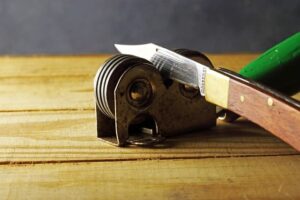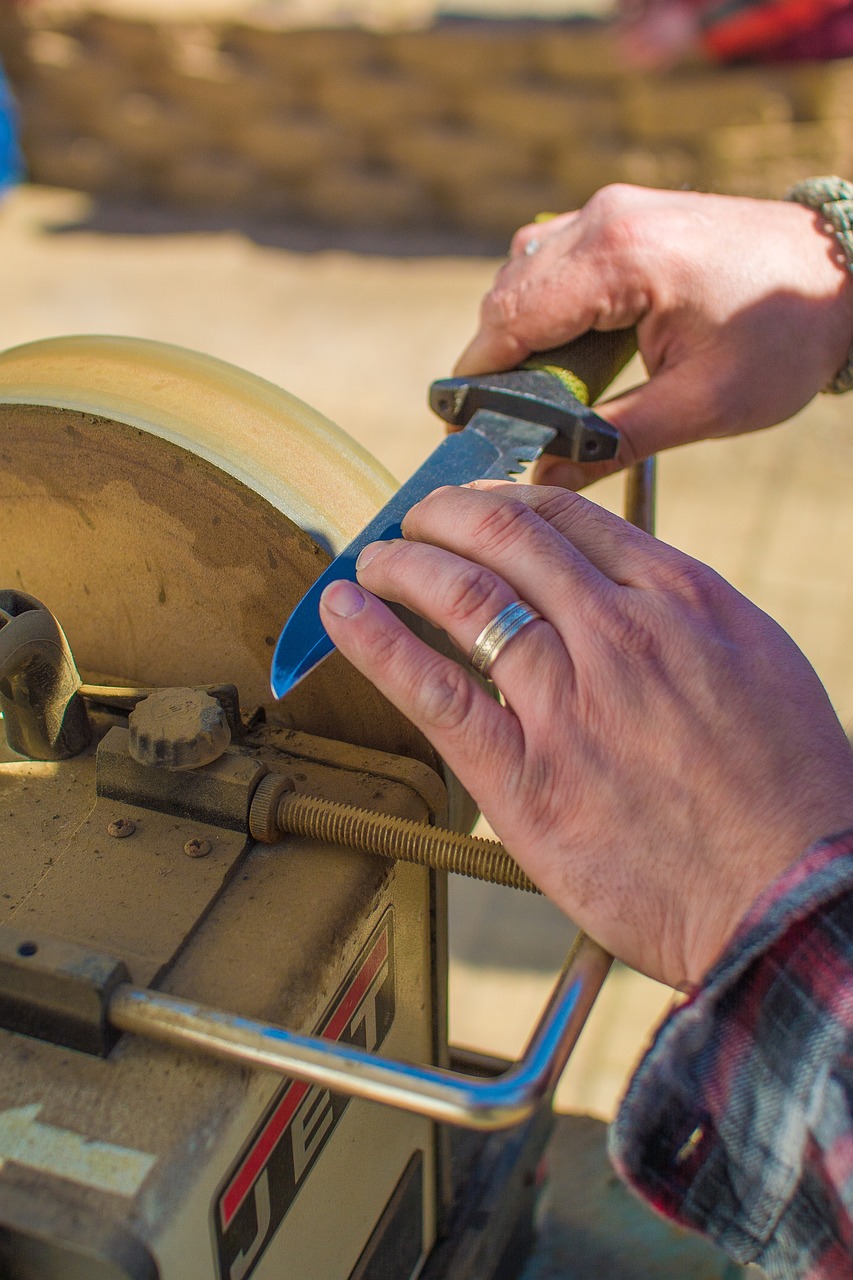Welcome to the exciting world of knife sharpening! Whether you’re a professional chef or a home cook, maintaining the sharpness of your blades is essential for achieving perfect cuts and enjoying a seamless cooking experience. In this article, we will unveil the secrets of knife sharpness and provide you with practical tips on how to keep your blades in prime condition.
Sharpening a knife may seem like a daunting task but fear not! We will guide you through the process step by step, debunking common myths along the way. From understanding the different types of knife sharpeners to mastering the correct angle for sharpening, we’ve got you covered. You’ll discover the importance of honing your knives regularly and learn how to avoid common mistakes that can harm your blades.
Whether you’re a beginner or an experienced sharpener, this article will equip you with the knowledge and techniques needed to achieve razor-sharp results every time. Say goodbye to dull knives and hello to precision cutting with our expert advice. Get ready to unlock the secrets of knife sharpness and elevate your culinary skills to new heights.
The importance of knife sharpness
A sharp knife is essential for efficient and safe food preparation. Dull knives require more force to cut through ingredients, which can lead to slips and accidents. On the other hand, a sharp knife will glide through foods with ease, resulting in clean and precise cuts.
Sharp knives also maintain the integrity of the food, preventing it from becoming crushed or bruised during cutting. This is particularly important when working with delicate ingredients like herbs or fish. A dull knife can also affect the flavor of the food, as it can cause cell damage and oxidation.
In addition, sharp kitchen knives can save you time in the kitchen. A dull knife will require more passes to cut through an ingredient, while a sharp knife can make quick work of the same task. This can be especially helpful when preparing large batches of food or working with tough ingredients like root vegetables.
Understanding knife sharpness: the basics
Before diving into the sharpening process, it’s important to understand the basics of knife sharpness. A sharp knife has a fine edge that tapers down to a point. This edge is created by removing a small amount of metal from the blade, which can become dull over time with use.
There are two main types of edges: straight and serrated. Straight edges are found on most kitchen knives and are used for slicing and chopping. Serrated edges, on the other hand, are found on knives like bread knives and are used for cutting through tough or crusty foods.
It’s also important to note that not all knives are created equal. Different types of knives require different sharpening techniques and angles. For example, a Japanese-style knife will have a different angle than a European-style knife or a benchmade blade. Understanding the specific needs of your knives will help you achieve the best results when sharpening.

Signs of a dull knife
Before sharpening your knife, it’s important to determine if it actually needs to be sharpened. Here are some signs that your knife may be dull:
– Difficulty cutting through ingredients
– Tearing or crushing of food during cutting
– Uneven slices or jagged edges
– More effort required to cut through food
– Blade appears shiny or polished instead of sharp
If you notice any of these signs, it’s time to sharpen your knife.
How to test the sharpness of your knife
There are several ways to test the sharpness of your knife. One common method is the paper test. Simply hold a sheet of paper and try to slice through it with your knife. A sharp knife should be able to cut through the paper cleanly and easily. If the knife struggles to make a clean cut, it’s time to sharpen it.
Another test is the tomato test. Tomatoes are notoriously difficult to slice cleanly, so they make a great test for knife sharpness. If your knife can slice through a tomato without crushing it, it’s sharp enough for most kitchen tasks.
Knife sharpening techniques: honing vs. sharpening
Before sharpening your knife, it’s important to understand the difference between honing and sharpening. Honing is the process of realigning the edge of the blade, while sharpening is the process of removing metal to create a new edge.
Honing should be done regularly to keep the edge of the blade straight. This can be done using a honing steel or rod. Simply hold the steel vertically and draw the blade down the length of the steel at a 20-degree angle, starting at the base of the blade and moving towards the tip. Repeat on the other side of the blade.
Sharpening, on the other hand, should be done only when the knife is dull. This can be done using a variety of tools, including sharpening stones, electric sharpeners, or manual sharpeners. The specific tool you use will depend on your personal preference and the type of knife you are sharpening.
Essential tools for knife sharpening
To sharpen your knife, you’ll need a few essential tools. These include:
– Sharpening stone: A sharpening stone is used to remove metal from the blade and create a new edge. There are several types of sharpening stones, including water stones, oil stones, and diamond stones.
– Honing steel: As mentioned earlier, a honing steel is used to realign the edge of the blade and keep it straight.
– Sharpening guide: A sharpening guide can be used to ensure that you maintain the correct angle when sharpening your knife.
– Electric sharpener: An electric sharpener can make quick work of sharpening your knives, but it may not be suitable for all types of knives.
Step-by-step guide to sharpening your knife
Now that you have the necessary tools, it’s time to sharpen your knife. Here’s a step-by-step guide to get your knife sharpness the best it can be.
1. Secure the sharpening stone to a flat surface.
2. Determine the correct angle for your knife and adjust the sharpening guide accordingly.
3. Apply a small amount of honing oil or water to the sharpening stone.
4. Place the blade of the knife against the sharpening stone at the correct angle.
5. Using moderate pressure, draw the blade across the stone, moving from the base of the blade to the tip.
6. Repeat on the other side of the blade, maintaining the same angle.
7. Continue sharpening the knife, alternating sides, until you achieve the desired level of sharpness.
8. Hone the knife using a honing steel to realign the edge of the blade.
Knife maintenance tips for prolonged sharpness
To keep your knives sharp for longer, it’s important to take care of them properly. Here are some tips for maintaining the sharpness of your knives:
– Store your knives in a knife block or on a magnetic strip to prevent damage to the blade.
– Avoid putting your knives in the dishwasher, as the harsh detergents and heat can damage the blade.
– Hand wash your knives with warm water and mild soap, then dry them immediately.
– Use a cutting board made of wood or plastic, as hard surfaces like glass or stone can dull your knives.
– Avoid using your knives to cut through frozen foods or bones, as this can damage the blade.
Common mistakes to avoid when sharpening your knife
While knife sharpness can be a straightforward process, there are some common mistakes to avoid. These include:
– Using too much pressure when sharpening, which can damage the blade.
– Sharpening at the wrong angle, which can create an uneven or ineffective edge.
– Not using enough lubricant on the sharpening stone, which can cause the blade to become damaged.
– Over-sharpening the knife, which can shorten the lifespan of the blade.
– Using the wrong type of sharpener for your specific type of knife.
See all the Knife Sharpening tools on Amazon
Conclusion: the key to a sharp and efficient knife
In conclusion, maintaining the sharpness of your knives is essential for efficient and safe food preparation. By understanding the basics of knife sharpness and following our expert tips, you can keep your blades in prime condition and achieve razor-sharp results every time. Remember to hone your knives regularly and use the correct tools and techniques for sharpening. With a little practice, you’ll be able to unlock the secrets of knife sharpness and elevate your culinary skills to new heights.



